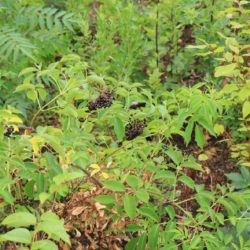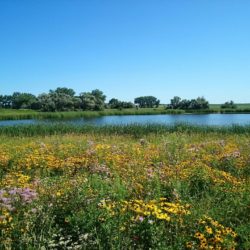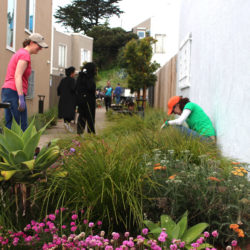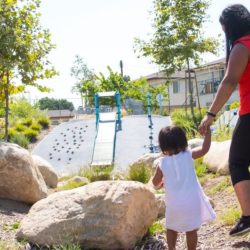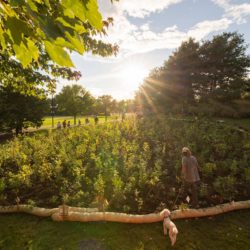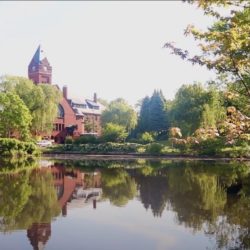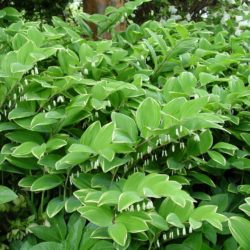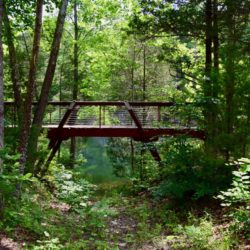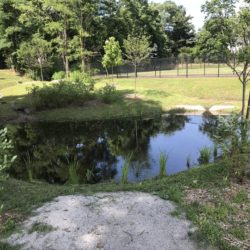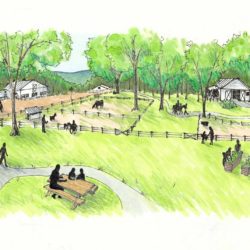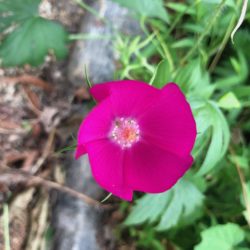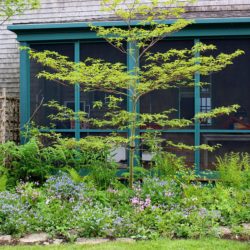MYAWAKI FOREST IN CAMBRIDGE, MASS. Written by: Leslie Duthie It is a beautiful 50′ circle of green in the dry park. Despite the severe drought, the trees look good and…
Public Gardens and Parks
The South Dakota Pollinator Project
By Paul Clinton
Over the past several years, one of my favorite landscape architecture projects has been developing and monitoring five pollinator plots at the South Dakota Department of Transportation (SDDOT) rest areas in the eastern part of the state along Interstate 29. As a landscape architect, it is satisfying to witness the return of native prairie plant communities and be a part of diverse projects – and working in South Dakota has allowed me to do both.
Ridge Lane: The Butterfly Effect of an Urban Vacant Lot
By Nahal Sohbati
Located in the Ingleside neighborhood of San Francisco, Ridge Lane is a vacant public right of way owned by the city. Vacant lands can serve as a public space and can significantly contribute to social engagement. Community members often take charge of these vacant lots and activate them through community gardening, guerrilla gardening, and other artful representations.
Q&A: How Data Helps Close The Park Equity Divide
Interview with Linda Hwang
Parks are essential for public health, climate resilience, and strong connected communities; however, 100 million people in the U.S.—including 28 million kids—don’t have a park within a 10-minute walk of home. We have the data to pinpoint where parks are needed the most. Linda Hwang, the Trust for Public Land’s director of research and innovation, talks about how data is helping to close the park equity divide.
Miyawaki Forests
By Maya Dutta
Miyawaki Forests are dense, biodiverse pocket forests that aim to recreate the relationships and succession of a natural forest. By densely planting a very biodiverse array of native species, such forests encourage collaboration between the plants, fungal and microbial life in the soil, resulting in fast-growing forests with high survival rates.
The Challenges and Opportunities for Riverbank Restoration
By Reed Pugh and Miles Connors
Winchester, Massachusetts, is situated on the banks of a tranquil, winding river. Like many waterways in New England, the Aberjona River has become home to many non-native and invasive plants that have largely overwhelmed our native plant palette. The Aberjona Initiative, a working group of the Conservation Commission, is tasked with restoring the river and pond banks in town center.
Landscape Brings Beauty and Dignity to Low-Income Housing
By Shanti Nagel and Meral Marino
Suppose you pop your head into the courtyard on 53rd street, a lush interior garden shared by 86 affordable housing units in Midtown Manhattan. In that case, you are likely to find Ursula parked in her wheelchair amidst the flowers and sunshine. When asked why this garden is so important to her, Ursula said, “It is a magic place!”
The Quarry Gardens at Schuyler
By Cynthia Wood
In the foothills of the Blue Ridge Mountains in Nelson County, Virginia, the Quarry Gardens at Schuyler offer a unique opportunity for nature lovers to learn about native plants and their ecosystems. Opened to the public in 2017, the Quarry Gardens occupy 40 acres within a 440-acre natural preserve, and support a vibrant diversity of species.
Merging Nature-Based Solutions and Recreational Areas
By Leah Wallner
The Town of Wellesley makes updates to improve a girls’ softball field, mitigate stormwater runoff and create a habitat for wildlife. The field was bordered by a busy street, an aqueduct, a neighborhood, and mature trees which provided many landscape challenges.
Huertos Accessibles Para Todos
By Rachel Lindsay
Un paisaje accesible debe ser fácil de acceder físicamente y también ofrecer experiencias variadas a todos los visitantes. Los diseñadores ecológicos llevan el concepto de diseño universal aún más lejos y consideran cómo el paisaje, especialmente los jardines públicos y participativos, pueden beneficiar no solo a personas de todas las capacidades, sino también a la vida silvestre, los polinizadores, los microorganismos del suelo y las cuencas hidrográficas.
Nature’s Sanctuary
By Gregg Tepper
West Laurel Hill Cemetery, a level-II accredited arboretum located in Bala Cynwyd, Pennsylvania, features a unique space called “Nature’s Sanctuary.” This one-acre space, which previously served as the cemetery’s dumpsite, now uses a managed successional plan that will gradually transition from a sunny meadow to a meadow/woodland combination and, finally, a mature forest. This article focuses on the range of native plant species grown in this one-acre space and doing so with deer pressure.
What Is Rewilding?
by Heather McCargo and Anna Fialkoff
The term rewilding first appeared in the conservation world in the 1980s with a continental-scale vision to protect large tracts of wilderness and connect these areas with migration corridors. Maine’s Wild Seed Project considers rewilding to be not just for the large wilderness areas or charismatic megafauna like wolves. Instead, they focus on actions that people can take right outside their doors.

